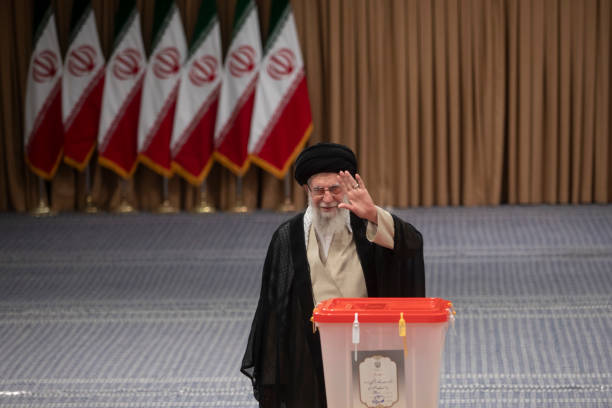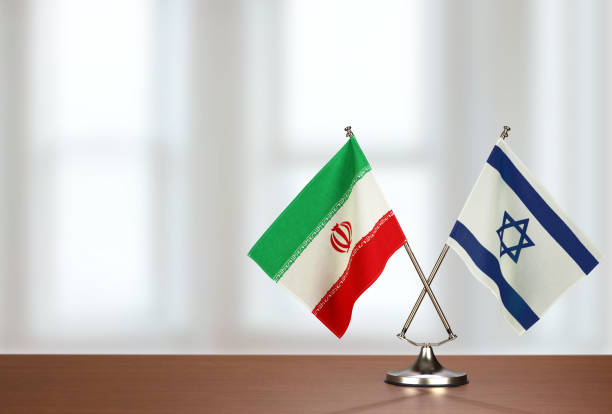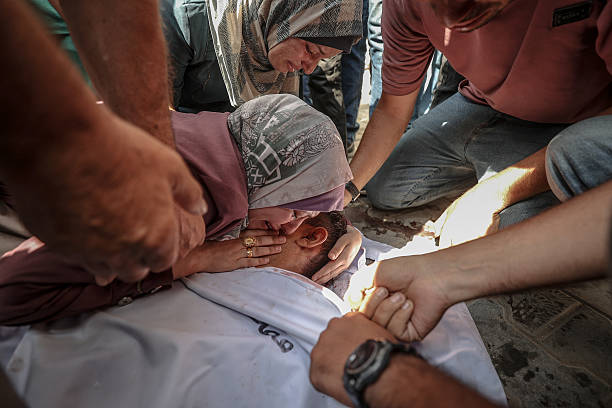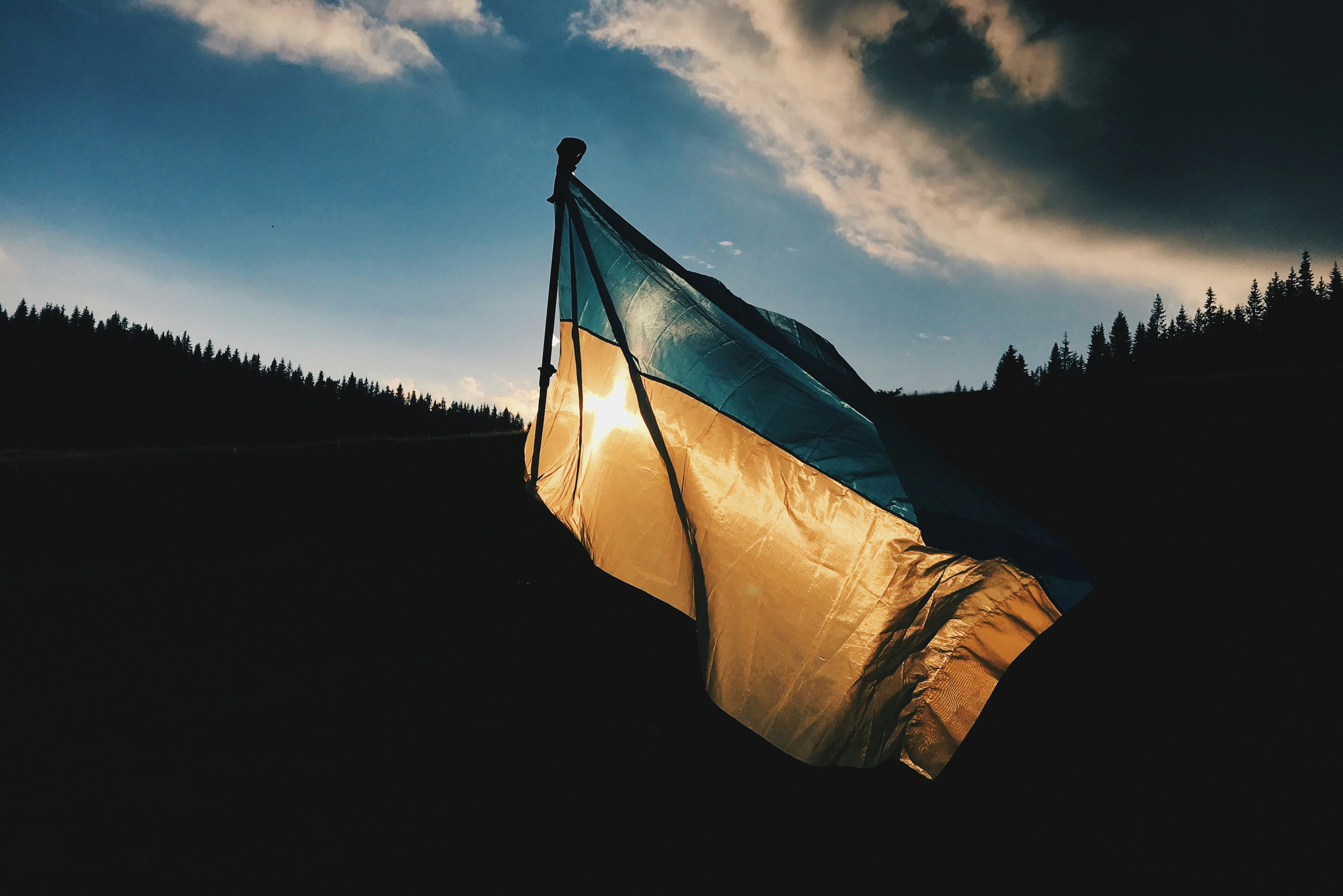Khamenei Faces Major Crisis as Israeli Strikes Shatter Iran’s Regional Strategy
Iran’s Supreme Leader Ayatollah Khamenei faces his gravest crisis yet as Israeli strikes dismantle Tehran’s regional influence and expose deep vulnerabilities in its defense strategy.
 TEHRAN, IRAN - JULY 5: Iranian Supreme Leader Ayatollah Ali Khamenei waves after casting his vote for the presidential runoff election on July 5, 2024 in Tehran, Iran. The second round of Iran's presidential elections was held while no candidate won the majority of votes in the first round of elections last month. In the second round, Saeed Jalili, who is known as a radical candidate, faced Masoud Pezeshkian, a reformist candidate. (Photo by Majid Saeedi/Getty Images)
TEHRAN, IRAN - JULY 5: Iranian Supreme Leader Ayatollah Ali Khamenei waves after casting his vote for the presidential runoff election on July 5, 2024 in Tehran, Iran. The second round of Iran's presidential elections was held while no candidate won the majority of votes in the first round of elections last month. In the second round, Saeed Jalili, who is known as a radical candidate, faced Masoud Pezeshkian, a reformist candidate. (Photo by Majid Saeedi/Getty Images)Iran’s Supreme Leader Ayatollah Ali Hosseini Khamenei, 84, now faces the gravest crisis of his long rule following the latest Israeli air offensive that has crippled Tehran’s deterrence network and exposed the weakness of its air defenses. The attacks, including the assassination of Hezbollah leader Hassan Nasrallah, have struck at the heart of the regional influence Khamenei has cultivated for decades.
In his first public appearance in five years last October, Khamenei addressed tens of thousands at a mosque in Tehran, declaring Israel “won’t last long.” His sermon, marked by defiance, followed Israel’s killing of Nasrallah in a powerful strike on Hezbollah’s Beirut headquarters — a deeply personal blow to Khamenei, who had known Nasrallah for decades.
The latest Israeli strikes, launched Friday, provoked an immediate response from Tehran in the form of missile and drone attacks on Tel Aviv. However, these have done little to deter further Israeli action. With air defenses faltering and Tehran’s network of regional militias in disarray, Khamenei now finds himself with few viable options — a scenario he has long tried to avoid.
Khamenei, born to a modest clerical family in Mashhad, began his journey as a radical during the Shah’s reformist drive in the 1960s. As a young student in Qom, he absorbed both the traditions of Shia Islam and the revolutionary ideas of Ayatollah Ruhollah Khomeini, then in exile. He became a key operator in Khomeini’s underground network, organizing Islamist activism and secret missions.
Influenced by anti-colonial ideologies and Western literature, Khamenei translated works by radical thinkers like Egypt’s Sayyid Qutb into Farsi, while also admiring authors such as Leo Tolstoy, Victor Hugo, and John Steinbeck. Imprisoned several times by the Shah’s regime, Khamenei joined the protests of 1978 and rose quickly after the Islamic Revolution, becoming president in 1981 after surviving an assassination attempt.
Khamenei succeeded Khomeini in 1989, following constitutional amendments that allowed him to take the role with greater powers despite lesser clerical credentials. He swiftly consolidated control, using institutions like the Islamic Revolutionary Guard Corps (IRGC) to build a robust power base.
Throughout the 1990s, he eliminated opponents and strengthened loyalist networks, including overseas operations targeting dissidents. His alliance with Hezbollah deepened during this period, and his governance combined pragmatic maneuvering with rigid ideological control.
When reformist Mohammad Khatami won the presidency in 1997, Khamenei allowed limited reforms but worked to shield the regime’s core from systemic change. Though he did not obstruct outreach to Washington post-9/11 or oppose the 2015 nuclear deal, he continued backing IRGC efforts to extend Iranian influence, especially through proxy groups in Iraq and elsewhere.
Khamenei’s rule has been marked by waves of internal unrest, met with fierce repression. Crackdowns on women, LGBTQ+ individuals, and religious minorities have intensified dissatisfaction, while worsening economic conditions have alienated segments of the population.
Externally, Khamenei invested in an “axis of resistance,” supporting Hamas, Hezbollah, the Houthis, and militias in Syria and Iraq. However, this strategy has faltered under Israeli military pressure, and Iran’s long-standing alliance with Syria collapsed with the fall of Bashar al-Assad’s regime in December.
Despite presenting an image of asceticism, living in a compound with his family on Palestine Street in Tehran, Khamenei’s modesty has been questioned by some. Nevertheless, it has shielded him from some public discontent, unlike more ostentatious officials.
Now in declining health, speculation over Khamenei’s successor is mounting. As Israel continues its assault and Tehran’s regional strategy unravels, the supreme leader faces perhaps the final and most difficult chapter of his rule — a test of his decades-long effort to preserve the legacy of the Islamic Revolution and his own grip on power.







Conversation